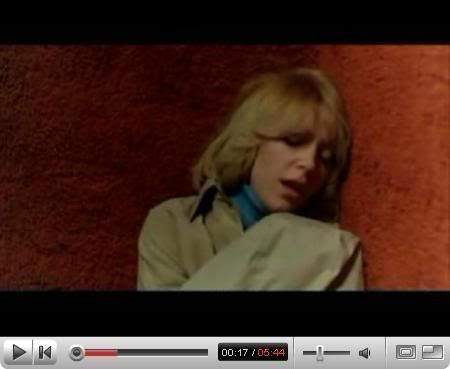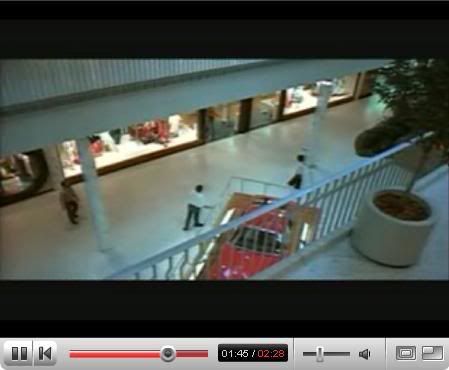Inspired by last night’s frequent zombie-related comments in this essay, combined with my lack of a literature diary for this week (I had a very good fill-in on dailykos), I decided to post an actual essay on zombies.
If that seems too fluffy a topic, it shouldn’t be: genre fiction is very serious stuff among academics, because it sometimes has greater insight about contemporary social and political issues than mainstream art (for a variety of reasons, but that’s a whole nother topic). Where genre fiction has its hardest time is with middlebrow critics: no horror films have won an Oscar for best picture, for example.
With that in mind, I want to turn back to what I’ll unapologetically call the greatest of all horror films – maybe not the scariest, maybe not the best-acted, but certainly the richest and most thought-provoking: a low-budget 1978 gorefest called Dawn of the Dead. If nothing else, the film is an excellent snapshot of mainstream American culture on the cusp of a particular type of collapse (the 1980s), and a brilliant combination of social critique, dire prediction, and philosophical density. It’s also funny as hell and set the high (low?) water mark on what was considered an acceptable display of violence and gore. But let’s start with some background:
 George Romero, an independent film director who made Pittsburgh his home and frequent film subject, did not catapult to success with the release of his now classic Night of the Living Dead. The extreme low-budget black-and-white horror film is now a household name and popularized the word “zombie” (which never appears in the film, incidentally), but its mainstream popularity was a long while coming: Night made the midnight circuit in different cuts, and the copyright-less Romero sees none of the profits from its frequent showings or low-grade DVD copies.
George Romero, an independent film director who made Pittsburgh his home and frequent film subject, did not catapult to success with the release of his now classic Night of the Living Dead. The extreme low-budget black-and-white horror film is now a household name and popularized the word “zombie” (which never appears in the film, incidentally), but its mainstream popularity was a long while coming: Night made the midnight circuit in different cuts, and the copyright-less Romero sees none of the profits from its frequent showings or low-grade DVD copies.
Night has none of the density of his later films, but that’s part of the reason for its popularity. While the film makes nods to the subtle (and not-so-subtle) racism of polite American culture and the destructive bent of alpha-male posturing, most of the film is simply an adrenaline jolt of horror, with a final 20 minutes that are unforgettably intense. The sharpest social critique comes in its stomach-churning final credits, which involve still photographs with unmistakable echoes to darker chapters in our history.
Years passed, and his film output was sporadic (Romero enthusiasts might have seen his 1973 cult favorite The Crazies, slated for a remake in a few years). Then in 1977/8, his annus mirabilis, he directed his two masterpieces: the criminally under-seen Martin, followed by Dawn of the Dead.
A brief word on Martin: See it. Romero weaves together an unconventional vampire film (is he even a vampire?) around a languid psychological thriller, and apart from one clumsy scene, the film’s evocation of place and time is the best he ever created. Martin takes place in a former industrial boomtown hit hard by economic decline, and an oppressive sense of despair – that especially American malaise of the Carter era – hovers over every shot. Meanwhile we hear the echoes of tabloid culture in a late-night radio show, the flowering of illicit drug trade in a town where other jobs are scarce, and above all the inability of modern culture to reconcile its dreams with its realities. The ending is sudden, brutal, unexpected, and … yeah, I know: I’m drowning this movie in praise. See it.
++++
As countless undergrad thesis papers have already delved into in far greater detail, the cumulative effect of [Dawn’s] thematic reversals points to Romero’s big message: that if the often bleak ’60s of Night were defined by their radical political activism, then the insipidly optimistic ’70s of Dawn are a testament to the politics of retrenchment, consumerist balm and self-immobilization.
If Martin looked around to diagnose the social ills of the late 70s, Dawn of the Dead looked forward to predict the social ills of the 80s, and its trenchant critique is still what most reviewers remember of the film. Some of what Romero accomplished is obvious even on casual viewing: the image of zombies stumbling mindlessly through a shopping mall doesn’t need much parsing.
Other things might, because Dawn crams more ideas into its variable running time than some directors accomplish in a lifetime: consumer culture and isolationism, abortion and women’s rights, immigration and racism, poverty and class, nuclear fears and gun nuts, religion, science, suicide, and survivalism. Obviously some of the issues are only touched upon or referenced, but the end result is a dense portrait of a society forced into changing with the times.
In Dawn, the ‘change’ is a new world in which the dead come back to life and eat the living. The film opens in medias res, with a news station disintegrating into panic as full-scale social failure sets in: (video won’t embed, so click on the link to view)
The scene immediately moves to a housing project, where military forces are engaged in an armed showdown with the Cuban immigrants living there – the crisis is swelling, and we’re already shooting at each other instead. On the DVD commentary Romero has noted that one of his fascinations is the fragility of civilization: here he illustrates how quickly everything can fall apart. Crisis initiates a strong drive towards our worst tendencies: racism, isolation, fear, and violence.
Meanwhile the plot centers in on four people: Roger and Francine, a couple who escape the television stadium via a stolen helicopter, and Stephen and Peter, both AWOL from law enforcement after the catastrophic failure in the housing projects. Seeking a place to secure themselves, they land on the roof of a zombie-infested mall and decide to cleanse and lock down the facilities: and why not? It’s a safe place, full of food and material comforts, and in the meantime they can monitor the television and radio for news.
++++
When does it begin to take over? There’s no precise point when the love of material goods and the disinterest in the rest of the species set in, but somehow along the way the four protagonists become empty shells. What affects them isn’t so much the mall (the jabs at consumerism are consistent, but secondary): this is really a critique of suburbia. Safe inside their bunker, their only contact with the outside world is through the media. They don’t search for survivors or put out a beacon to attract other desperate people (more on that later), but they secure themselves as well as possible against the outside threat. The next decade would bring a rise in suburban malaise films, but Romero was among to first and sharpest to see just how destructive these tendencies could be.
Also keep in mind that the giant indoor shopping mall, an easy enough target today, was a relatively new phenomenon when Romero made this film.
Complexities ensue: though I just criticized the main characters for their failure to advertise themselves to other survivors, who’d have thunk that the first survivors they’d meet would be a roving, violent gang of bikers? This is a typically nuanced piece of Romero filmmaking: isolationism isn’t just about narcissism and laziness, but also a very real effect of people fighting over limited resources. In a world where security and food stocks are not commonplace, why shouldn’t survivors gather all they can and hide from the rest? But then again, this is the nature of human life, and U.S. foreign policy isn’t too much different: in a battle for oil, fresh water, and arable land, we hoard what we can and we defend it. Because if we didn’t, someone else would be doing it to us. Such is life.
I’ll leave it at that, because you really have to discover the riches of this film for yourself, if you haven’t already. Though I’m taking the highbrow analysis, it’s very funny, very gory, and surprising in the way it fails to fulfill conventional genre expectations. The final scene is a bit of a letdown, but my reading of it would require about three more diaries and a whole lot of discussion. So I’ll leave it at that.
I have one more point to make, but it contains pretty heavy spoilers. If you don’t want to know what happens in the film, skip over the next section.
++++
In case you missed that: SPOILERS ahead.
It’s the little things in the film that always seem to affect me, anyway – the way that, regardless of the fact that the characters are facing the apocalypse, they still try to function according to the rules of a society that no longer exists.
Everything I’ve described so far explains why Dawn is a good film. But Dawn isn’t merely a good film, it’s a great film, because Romero pulled off something truly unique: he created a world in which our fundamental understanding of humanity gets subverted, and we cannot survive the consequences.
I’ll explain. What separates a human being from a zombie? Physically we are similar (minus the visible gore, although Romero was sharp enough to make the connection to war veterans disfigured by the horrors of combat), so the differences are intangible: zombies do not recognize each other, do not love their family members, do not respect their friends. They are in essence cold killing machines.
This creates a problem. The fact that zombies exist, and that we all become them when we die, creates a new paradigm for survival: if we want to live, we’re going to be forced to kill our friends and family should the need arise. And that’s not all: that everyone who dies becomes a zombie means that we will be forced to kill everyone who doesn’t die before we do… Makes lifelong attachments a little difficult, doesn’t it? Characters who feel pity because they recognize a strong emotional attachment to the recently deceased find themselves at the receiving end of a flesh-eating set of teeth. The only way to ensure survival is… get ready for it!… becoming cold killing machines. So if that happens, what continues to separate us?
That’s the film’s dark secret: the war was lost the moment it began.
The ancient Greeks used to structure their tragic art around a notion of dilemma: sometimes life creates circumstances in which all possible decisions are equally bad. Romero hasn’t just created a dilemma here, he’s created a capital-D Dilemma… an Existential Dilemma that offers no positive resolution. Ever.
It’s there all through the film, but the full weight of this takes a while to sink in. The scene in which it becomes explicit elevates this film above anything I’ve ever seen in horror: Stephen has no choice but to kill his best friend Peter, who’s recently been bitten by a zombie and soon to become one himself. Note the way Romero balances the abstract debate between two television talking heads (a journalist and a scientist) against the private dilemma of the protagonists. No matter how loathsome his suggestions, the scientist is right, but our inability to live with the consequences puts us beyond all hope of survival. This combination of abstract with immediate is grueling and creates a persistent dread that lingers in the soul far longer than the conventional horror of torn limbs and living dead.
++++
END SPOILERS
Some links for further reading, if you’re interested:
- The best essay I’ve read online about Dawn, at Film as Art. This goes in depth into all the social issues Romero was weaving into the plot, and contains spoilers.
- Roger Ebert’s review. Ebert was one of the first to recognize the film’s brilliance, and gave it his highest rating:
“Dawn of the Dead” is one of the best horror films ever made — and, as an inescapable result, one of the most horrifying. It is gruesome, sickening, disgusting, violent, brutal and appalling. It is also (excuse me for a second while I find my other list) brilliantly crafted, funny, droll, and savagely merciless in its satiric view of the American consumer society. Nobody ever said art had to be in good taste.
- The Arrow-in-the-Head review (my favorite site for horror reviews)
- Huge list of reviews and essays at IMDB.com
Thanks for reading!



11 comments
Skip to comment form
Author
(although film lends itself well to literary analysis, too: I don’t discriminate). See you next Tuesday for some seriously drain bramage trying to understand The Book of Job.
if movies and t.v. shows could copulate fruitfully, “fido” would be the offspring from the blessed union of “dawn of the dead” and “leave it to beaver.”
great post, btw
on ‘the flesh-eating undead’. i wonder if this will be the only essay to appear.
‘twould be ok if it were…awesome read. thanks.
this is an excellent essay on one of my favorite films, for all the reasons you pointed out above.
Thank you very much for writing this.